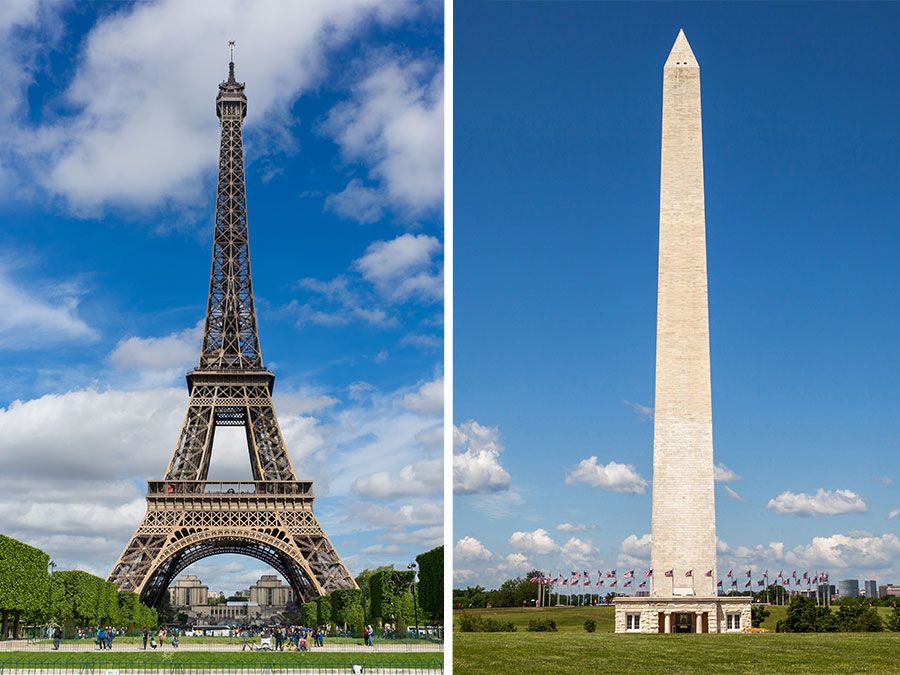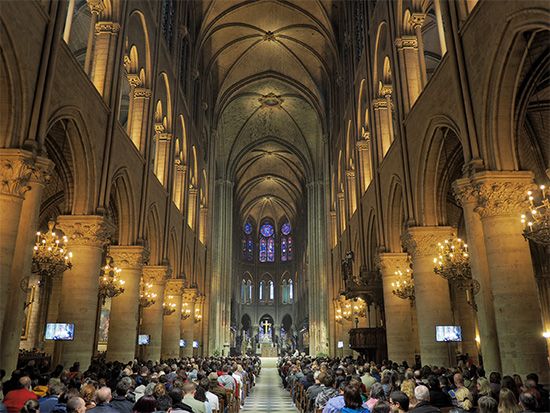Notre-Dame de Paris
Our editors will review what you’ve submitted and determine whether to revise the article.
- Also called:
- Notre-Dame Cathedral
News •
Notre-Dame de Paris, cathedral church in Paris. It is the most famous of the Gothic cathedrals of the Middle Ages and is distinguished for its size, antiquity, and architectural interest.
Notre-Dame lies at the eastern end of the Île de la Cité and was built on the ruins of two earlier churches, which were themselves predated by a Gallo-Roman temple dedicated to Jupiter. The cathedral was initiated by Maurice de Sully, bishop of Paris, who about 1160 conceived the idea of converting into a single building, on a larger scale, the ruins of the two earlier basilicas. The foundation stone was laid by Pope Alexander III in 1163, and the high altar was consecrated in 1189. The choir, the western facade, and the nave were completed by 1250, and porches, chapels, and other embellishments were added over the next 100 years.
Notre-Dame Cathedral consists of a choir and apse, a short transept, and a nave flanked by double aisles and square chapels. Its central spire was added during restoration in the 19th century, replacing the original, which had been completely removed in the 18th century because of instability. The interior of the cathedral is 427 by 157 feet (130 by 48 meters) in plan, and the roof is 115 feet (35 meters) high. Two massive early Gothic towers (1210–50) crown the western facade, which is divided into three stories and has its doors adorned with fine early Gothic carvings and surmounted by a row of figures of Old Testament kings. The two towers are 223 feet (68 meters) high; the spires with which they were to be crowned were never added. At the cathedral’s east end, the apse has large clerestory windows (added 1235–70) and is supported by single-arch flying buttresses of the more daring Rayonnant Gothic style, especially notable for their boldness and grace. The cathedral’s three great rose windows alone retain their 13th-century glass.

Notre-Dame Cathedral suffered damage and deterioration through the centuries. After the French Revolution it was rescued from possible destruction by Napoleon, who crowned himself emperor of the French in the cathedral in 1804. Notre-Dame underwent major restorations by the French architect Eugène-Emmanuel Viollet-le-Duc in the mid-19th century. The popularity of Victor Hugo’s historical novel Notre-Dame de Paris (1831), wherein the cathedral is the setting, was said to have inspired the renovations. During a restoration campaign a fire broke out on April 15, 2019, in the cathedral’s attic, and the massive blaze destroyed most of the roof, Viollet-le-Duc’s 19th-century spire, and some of the rib vaulting. Pres. Emmanuel Macron immediately promised that the cathedral would be rebuilt—ultimately setting a timetable of five years. Notre-Dame is set to reopen on December 8, 2024, following a restoration project estimated to cost upward of €700 million ($767 million).



























